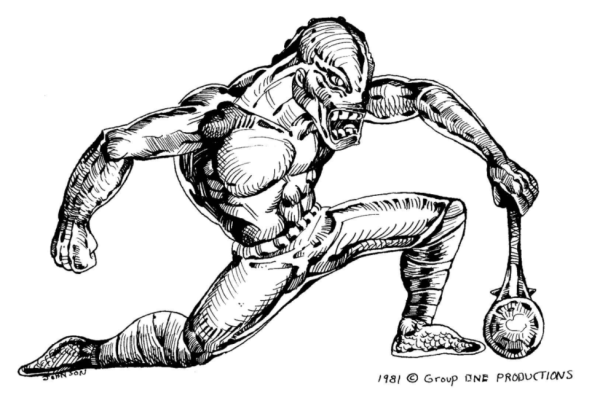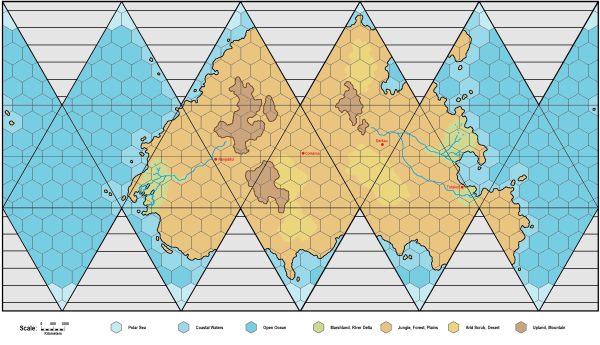Bose
| Bose | |||||||||||||||||||||||||
|---|---|---|---|---|---|---|---|---|---|---|---|---|---|---|---|---|---|---|---|---|---|---|---|---|---|
 Minor Race | |||||||||||||||||||||||||
| Base Information | |||||||||||||||||||||||||
| Classification | Omnivore/hunter | ||||||||||||||||||||||||
| Status | Minor Race | ||||||||||||||||||||||||
| Locomotion | Walker | ||||||||||||||||||||||||
| Terrain | Forest, Plains | ||||||||||||||||||||||||
| Body Form | |||||||||||||||||||||||||
| Confluence | Humanoid | ||||||||||||||||||||||||
| Bio-Identenoid | Reptillianoid | ||||||||||||||||||||||||
| Size | 1.0-1.5 meters | ||||||||||||||||||||||||
| Weight | 50 kg | ||||||||||||||||||||||||
| Culture | |||||||||||||||||||||||||
| Languages | Native Language | ||||||||||||||||||||||||
| Social Structure | Participatory Democracy | ||||||||||||||||||||||||
| Technological Epoch | TL:4-6 | ||||||||||||||||||||||||
| Psionic potential | Standard | ||||||||||||||||||||||||
| Origin World | |||||||||||||||||||||||||
| Homeworld location | Wabor-Parn (Theta Borealis 2903) | ||||||||||||||||||||||||
| UWP | E545420-5
| ||||||||||||||||||||||||
| Primary Star | M2 V | ||||||||||||||||||||||||
| Atmosphere | Thin (tainted) | ||||||||||||||||||||||||
| Off-world presence | No | ||||||||||||||||||||||||
| Zoetic individuals | Yes | ||||||||||||||||||||||||
| Source | |||||||||||||||||||||||||
| Reference | Wabor-Parn 9. | ||||||||||||||||||||||||
| Canon | No | ||||||||||||||||||||||||
| Also see | Trist | ||||||||||||||||||||||||
The Bose are a sophont species native to Wabor-Parn (Theta Borealis 2903).
- They are a technologically developing Minor Non-Human Race with a generally humanoid appearance.
- They share their homeworld with the Trist.
- The Bose and the Trist have a common ancestor species.
Description (Specifications)
The Bose are short and slender and display a bilateral symmetry. They have a humanoid body shape, with two arms, two legs, a torso, and a head mounting the major sensory organs. They are hairless and typically have a golden yellow coloration, often with paler necks and bellies. Some individuals may display narrow brown stripes or mottled patches. Adults are smaller than humans, generally standing at around 1–1.5 meters and weighing less than 50 kg.
- Bose have a body profile of Bilateral HBS-T-AN-LN-N, internal skeleton, blood fluids, skin exterior.
- They lack physical strength but are fast, agile, and extremely hardy.
The known population of Bose numbers some 10,000 individuals. Should disaster overtake them, they face the very real danger of becoming extinct.
Respiration
Bose employ a conventional respiration cycle consisting of an oxygen-nitrogen inhalant and a carbon dioxide exhalant.
- Bose evolved in a thin atmosphere and find pressures of 430–700 millibars ideal.
Senses
Bose vision is similar to humans in terms of sharpness. Color perception is centered on a wavelength of 890 nm (the peak wavelength of their star), which corresponds to the near infrared end of the EM spectrum.
- Bose see well in conditions humans consider gloomy or dark.
- Bose find preferred human levels of lighting to be uncomfortably bright.
- Hearing, sensitivity to volatiles (smell and taste), and sensitivity to pressure and texture (touch) are broadly equivalent to those of humans.
Diet
Bose have a preference for a carnivorous diet but can comfortably survive on roots, berries, and other plant produce.
Reproduction
There are two genders (male and female). Externally there are few differences between the sexes.
- Bose are oviparous. Eggs are incubated by both parents and the young are raised communally.
- Females only become gravid under specific local environmental conditions: population growth is slow.
Psychology
The Bose exhibit recognized characteristics of intelligence:
- Conceptual thought, including abstract language.
- Social structure, including social organization.
- Tool use, allowing environmental manipulation.
Bose psychology is driven by factors common to many sophonts:
- Acquisition (stemming from the need to gather adequate nutrition),
- Preservation (derived from the need to continue their personal existence), and
- Perpetuation (the urge to continue the species).
History & Background (Dossier)
The primal ancestors of the Bose evolved around 2 million years ago. Prior to human contact (around -2100) their population was approximately 35 million. They lived in independent nation-states and had a level of advancement equivalent to TL–1, though some nations were on the brink of achieving TL–2.
- Extensive ruins remain from this period, though they are heavily overgrown and extremely badly decayed.
Their tech level climbed following human contact, reaching a peak of TL–5 during the Long Night, and their society prospered under a single unified government.
The race suffered extinction-level casualties in a global war that occurred sometime around -300.
- It seems likely that the extinction war was fought against the growing Trist hordes, who had started raiding into Bose territory.
- It is believed the Bose employed targeted bioweapons. These failed to work as anticipated, with catastrophic consequences.
- The few thousand individuals that remain are descended from the survivors.
- The war left the world's atmosphere permanently tainted by microscopic biological pathogens.
- The current Bose population are completely immune to any lingering effects.
- Other native flora and fauna was not noticeably affected.
Rumors persist of hidden groups of Bose survivors inhabiting deep bunkers constructed prior to the war. If true, there could be many thousands more Bose than current surveys indicate.
- It is uncertain whether these individuals would have immunity to the atmospheric bioweapons.
Government
Bose society is governed by a Participatory Democracy where eligible voters determine laws and policy. Leadership of the government and all members of the bureaucracy are determined by voting population.
- The Bose are on generally good terms with the nomadic Trist tribes, though there is only limited contact.
Culture
Bose primarily live in settled communities, providing for themselves through mining and farming (chiefly rearing livestock on huge ranches, though cultivating plants is becoming increasingly important). Bose towns, though small, are commercial and social centers.
- Homogeneity: 1 (monolithic)
- Acceptance: 1 (extremely xenophobic)
- Strangeness: 1 (very typical)
- Symbols: 1 (extremely concrete)
The Bose have a rich lore filled with legends and tales, often involving great treasures. Many of these are set in identifiable geographical locations and are based on real historical events.
Many Bose religious beliefs relate to the intensely bright stars of the Borealis Group, which illuminate the worlds night-time skies.
Astrography
This race is primarily located in the following areas:
Homeworld
The homeworld of this race is:
- Wabor-Parn (Theta Borealis 2903), a world with a tropical climate and rich with life, orbiting close to a dim red main sequence star.
World Listing: 1105
Significant communities of this race are known to exist within the following systems and worlds:
References & Contributors (Sources)
| This article is missing content for one or more detailed sections. Additional details are required to complete the article. You can help the Traveller Wiki by expanding it. |
- Bill Bledsaw. Wabor-Parn (Group One, 1981), 9.
- Bill Bledsaw. Theta Borealis Sector (Group One, 1981), .
- Author & Contributor: Lord (Marquis) and Master Scout Emeritus Adie Alegoric Stewart of the IISS
- Author & Contributor: Lord (Marquis) and Master of Sophontology Maksim-Smelchak of the Ministry of Science

